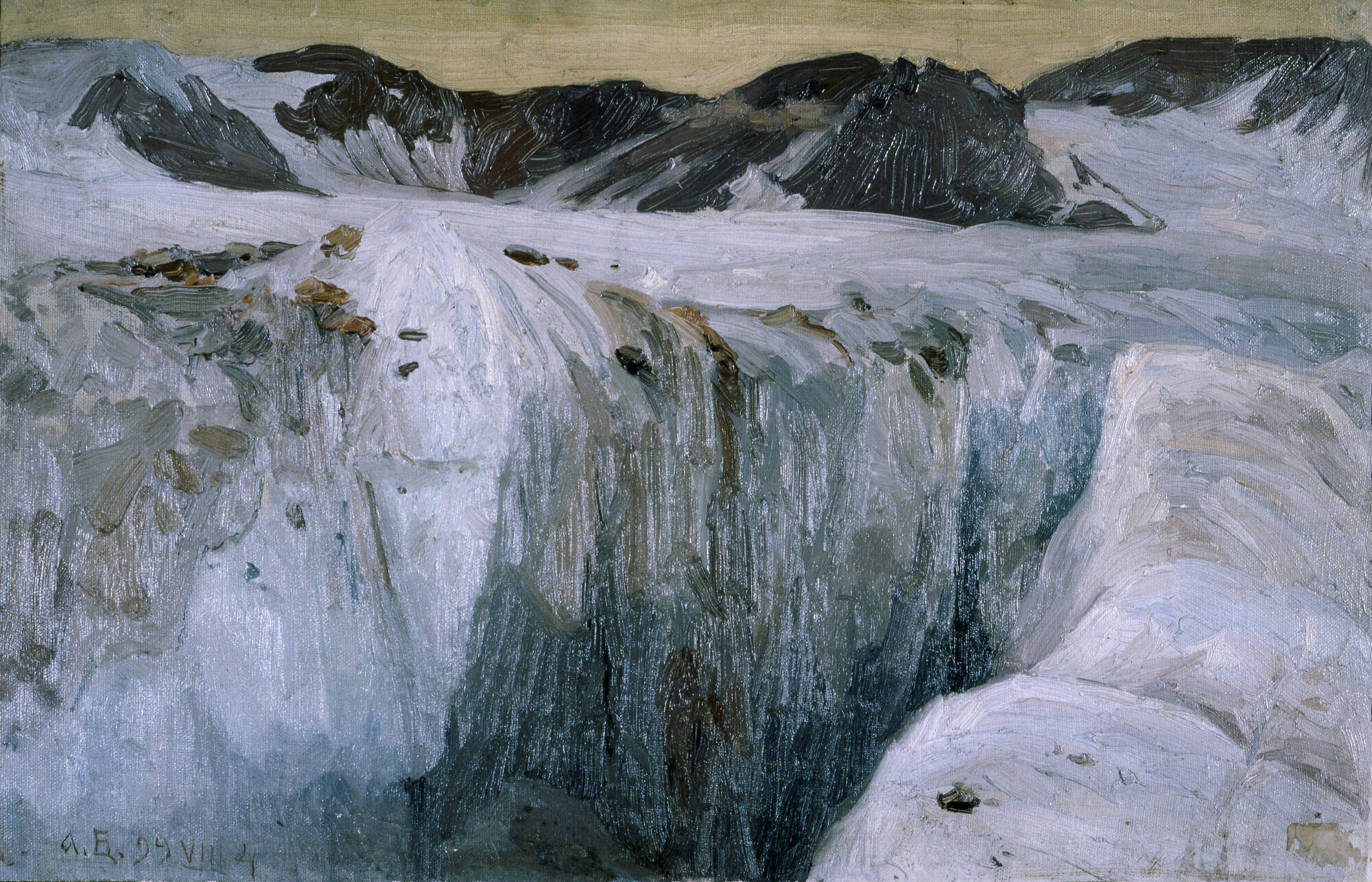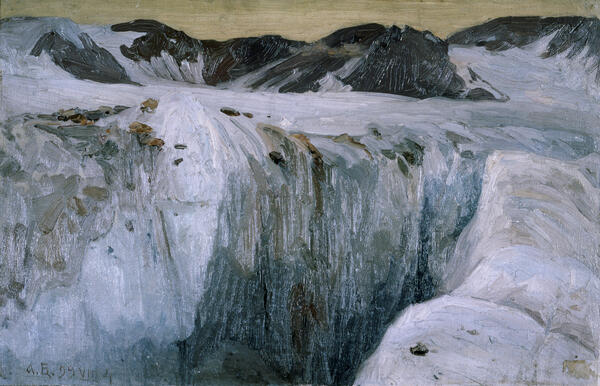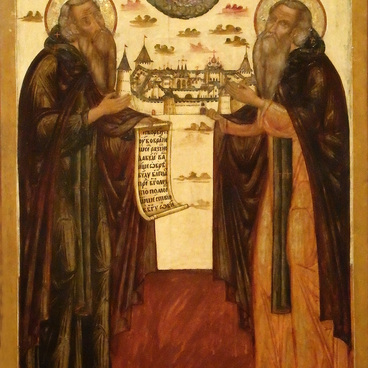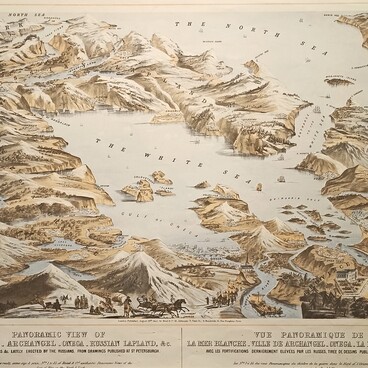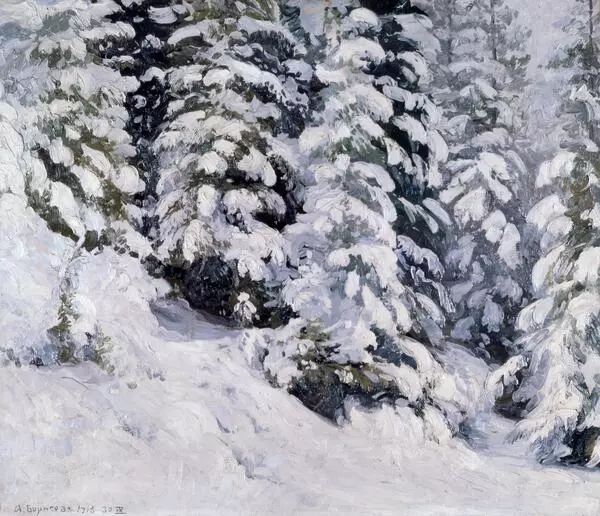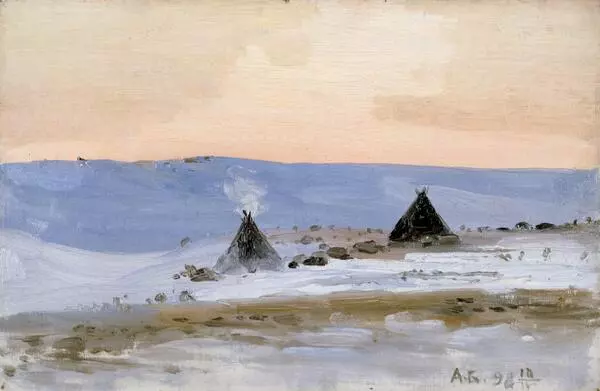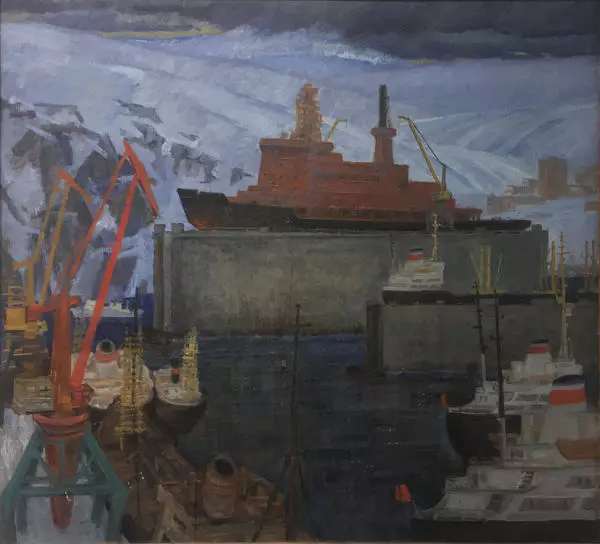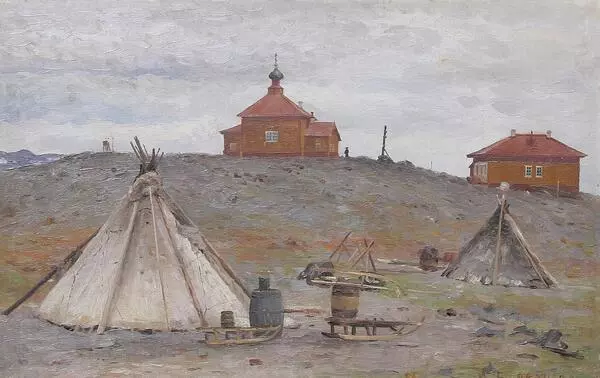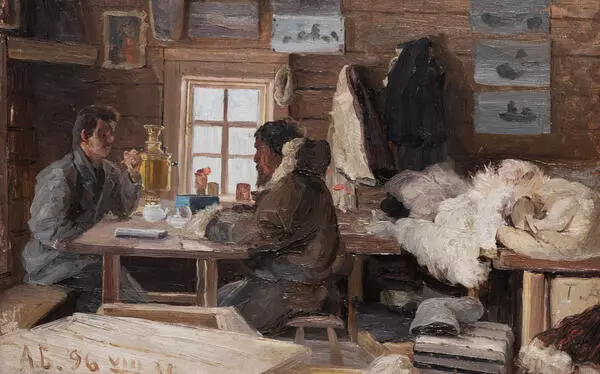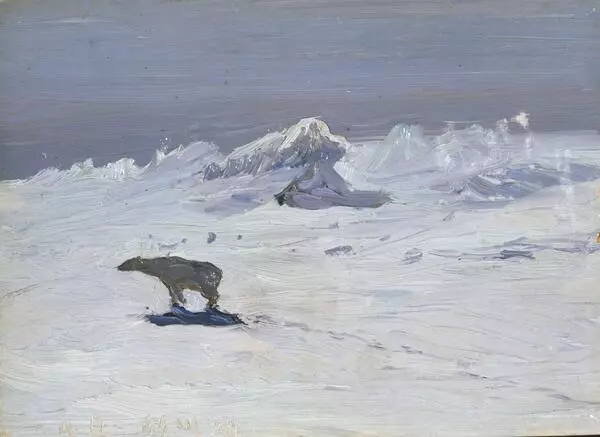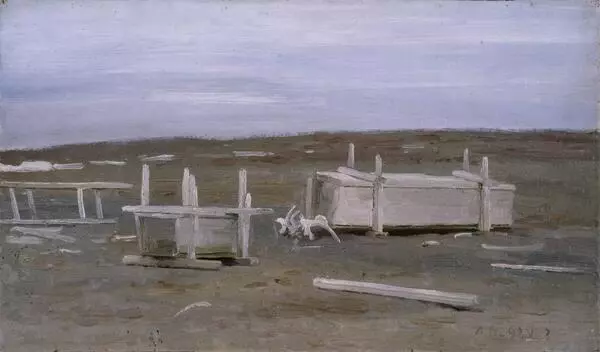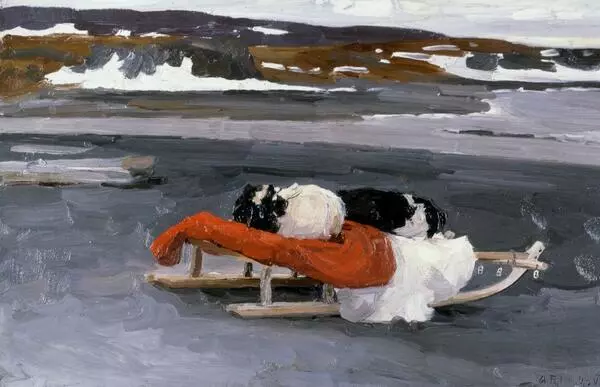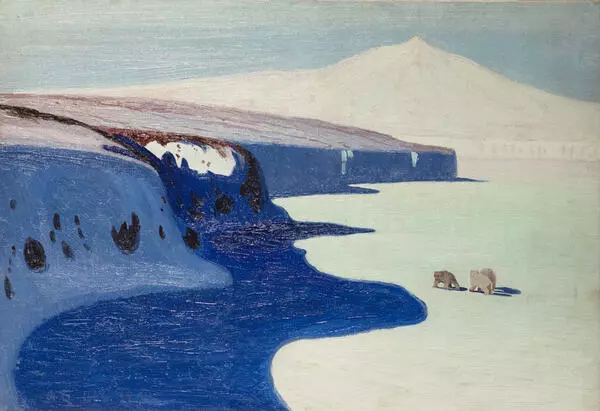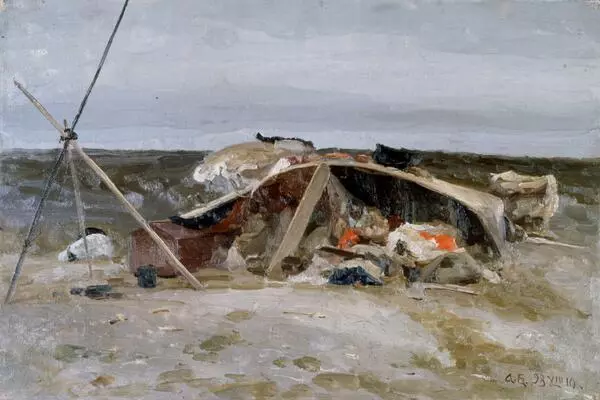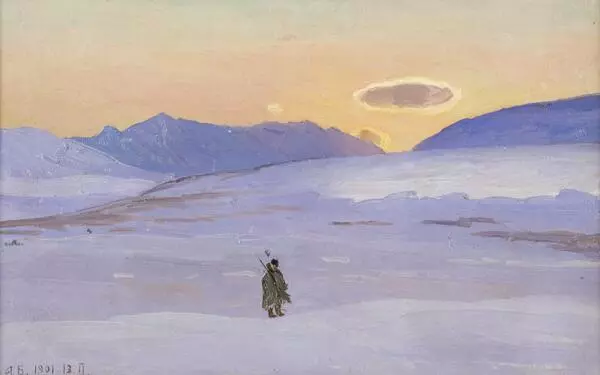The Museum of the Artistic Exploration of the Arctic situated in Arkhangelsk is named after Alexander Alexeyevich Borisov, a notorious Russian painter and a pioneer in the arctic landscape painting. He was referred to as ‘a bard of the northern nature’, ‘a poet of the midnight sun’, or ‘an artist of the eternal ice’.
Alexander Borisov gave all his talent to the North. He was consumed with thoughts about little-known Russian explorers, such as Savva Lozhkin, Fyodor Rozmyslov, Yakov Chirakin, Pyotr Pakhtusov and others. The artist was excited by the idea of a lonely hero conquering the Arctic. It had begun when Borisov was a child and his nanny told him stories about the polar land with its snow-covered expanses and hardy people.
Later, Borisov would write in his diary: ‘My thoughts were travelling far away, to the unknown lands, to the North.’ By a twist of fate, Borisov came to Solovetsky Islands at the age of fifteen. There he met fishermen and hunters who told him about the Pomors, people living by the sea and with the sea.
The artist wrote: ‘The Far North, with its gloomy, yet mighty and mysterious nature, with its eternal ice and long polar night, has always attracted me. I am a Northerner in heart and by birth, and since my youth, I have always had only one dream: to go there, to move up, outside of the Arkhangelsk Governorate.’
The dream did come true: Borisov undertook several major artistic expeditions into the Arctic, leaving a legacy of hundreds of landscape paintings and studies.
The turn of the 20th century is an era of an active expansion into the Arctic. Alexander Borisov, a native-born Russian Northerner, was longing to visit those unexplored lands. To fulfill his dream — ‘to steal the silent mystery of the North and show the world the uncanny beauty of the Arctic world’ — he joined several Arctic expeditions and then undertook expeditions of his own.
After visiting the Kola Peninsula and Novaya Zemlya, the artist presented many studies on the topic that were soon noticed by Pavel Tretyakov, a famous collector and patron of art. The collection of Borisov’s paintings and studies acquired by Tretyakov for his city gallery comprised of 65 pieces and was exhibited in Hall 22. In his turn, as a token of gratitude to the famous philanthropist, Borisov gave Tretyakov’s name to a glacier in the Novaya Zemlya archipelago.
Alexander Borisov gave all his talent to the North. He was consumed with thoughts about little-known Russian explorers, such as Savva Lozhkin, Fyodor Rozmyslov, Yakov Chirakin, Pyotr Pakhtusov and others. The artist was excited by the idea of a lonely hero conquering the Arctic. It had begun when Borisov was a child and his nanny told him stories about the polar land with its snow-covered expanses and hardy people.
Later, Borisov would write in his diary: ‘My thoughts were travelling far away, to the unknown lands, to the North.’ By a twist of fate, Borisov came to Solovetsky Islands at the age of fifteen. There he met fishermen and hunters who told him about the Pomors, people living by the sea and with the sea.
The artist wrote: ‘The Far North, with its gloomy, yet mighty and mysterious nature, with its eternal ice and long polar night, has always attracted me. I am a Northerner in heart and by birth, and since my youth, I have always had only one dream: to go there, to move up, outside of the Arkhangelsk Governorate.’
The dream did come true: Borisov undertook several major artistic expeditions into the Arctic, leaving a legacy of hundreds of landscape paintings and studies.
The turn of the 20th century is an era of an active expansion into the Arctic. Alexander Borisov, a native-born Russian Northerner, was longing to visit those unexplored lands. To fulfill his dream — ‘to steal the silent mystery of the North and show the world the uncanny beauty of the Arctic world’ — he joined several Arctic expeditions and then undertook expeditions of his own.
After visiting the Kola Peninsula and Novaya Zemlya, the artist presented many studies on the topic that were soon noticed by Pavel Tretyakov, a famous collector and patron of art. The collection of Borisov’s paintings and studies acquired by Tretyakov for his city gallery comprised of 65 pieces and was exhibited in Hall 22. In his turn, as a token of gratitude to the famous philanthropist, Borisov gave Tretyakov’s name to a glacier in the Novaya Zemlya archipelago.
